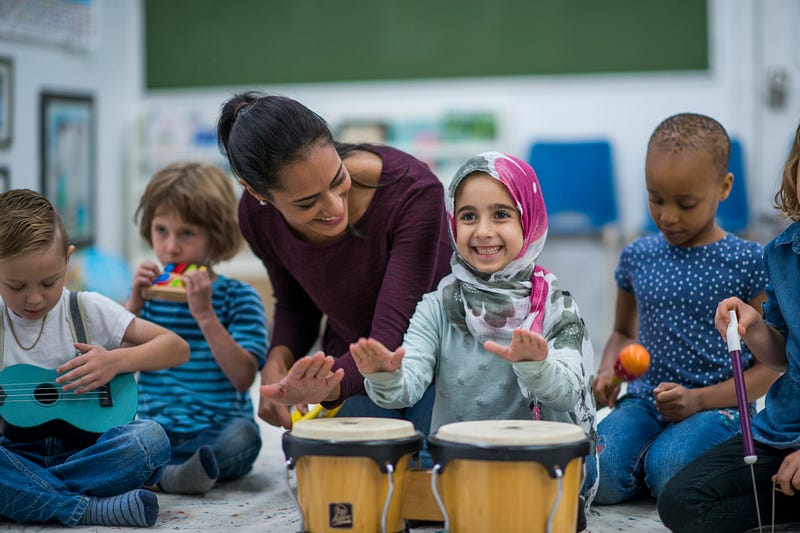A Case for Community Schools
From Jill Savage, a Baltimore County community schools coordinator

“Community schools fling open the doors of the schoolhouse and invite others in.” — Jill Savage
Jill Savage, LCSW-C, is a community school coordinator at Lansdowne High School and Baltimore Highlands Elementary in Baltimore County. Her experience includes having been a school social worker in the Lansdowne area since 2002.
Just months before I was hired to be a Baltimore County community schools coordinator, I knew nearly nothing about community schools. It didn’t take long for me to become a believer.
Community schools fling open the doors of the schoolhouse and invite others in, working together to ensure success for all students. They are dynamic partnerships among students, families, schools, and community members that offer a broader scope of convenient, accessible services and programs available within a school building. All have a voice and leadership is shared.
Students filling our classrooms today represent the beautiful diversity blooming in our communities. They bring with them equally diverse lifetimes of experiences that impact their attitudes, their learning, their relationships, and their behaviors.

For a growing number of students, these experiences include significant social-emotional stressors: poverty, hunger, housing instability, cultural and language differences, health concerns, violence, addiction.
The weight of those stressors often interferes with students’ attendance and engagement in school. Faculty are consistently challenged to respond to what lies beneath — the story behind the story of each student.
Student support staff in schools are overwhelmed by requests for assistance. Families are referred to a maze of mental health treatment providers, social service agencies, and food pantries. Some families can connect to those resources; but for families who struggle to navigate complex systems, help remains elusive.
More than just a package of wrap-around services, community schools work to integrate and align existing strategies, adjust programming as needed, and innovate to respond to unmet needs or interferences.
A community school is both a place and a set of partnerships between the school and other community resources. Its…www.communityschools.org
Thanks to the advocacy of our teachers’ union, the Teachers Association of Baltimore County, and the support of our school system, our fledgling initiative in Baltimore County has two school teams of dedicated partners collaborating to make our schools and community stronger.
You’ll find a food pantry/clothes closet, family resource centers, in-school mental health services, student internships, reading volunteers, a service learning resource center, adult ESOL English classes, after-school programming, STEM mentoring, and student leadership building. We are proud of our progress, but there is more to be done. Building the capacity of existing programs and services, with ongoing assessment, will drive the work moving forward.
We are in good company. Baltimore City’s own community schools were one of two national initiatives recognized in 2015 for their success in supporting students and boosting achievement.
Over the past decade and with bipartisan support, “community schools,” which connect schools within a community-based…www.baltimoresun.com
Their best community schools boast increases in school readiness scores, attendance, reading proficiency, and overall school performance. Crucial to their success has been the commitment of the school system and local government to the community school strategy.
As both suburban and rural schools are observing widening achievement gaps among students of color, increased numbers of immigrant students, and expanding areas of poverty, more school systems have begun exploring the community schools model. We intend to work steadily to achieve the exemplary outcomes of our colleagues; however, it will take system-wide policy — bolstered by a funding commitment — to ensure community schools are equipped with the staffing and resources required for the integrated academic and social programs so many of our students need.
Could there be any better investment?
Editor’s Note: On January 18, the Kirwan Commission voted to approve their interim report. The report finalizes the Commission’s policy recommendations, which include a series of supports for students who face greater challenges, including the scaling up of community schools in areas of concentrated poverty, significantly increased funding for special education, and family support services for students learning English as a second language.

